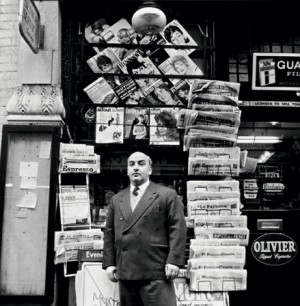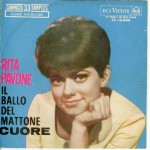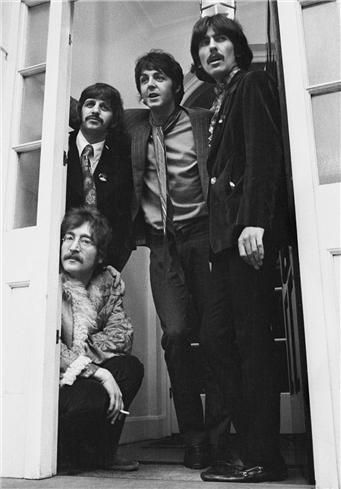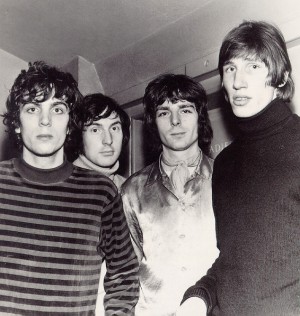Armando Gallo – The Interview | 1 | The Beginnings
Armando, how did it all begin? You went to London in 1966, I think.
Yes. It was June 11th 1966, a Saturday. I finished my National Service in Italy March 10 and I spent the next three months writing to engineering companies in England because I was set to move there with a one-way ticket. In Rome I was working for an American firm developing new towns in Libya, a job that I had before going for my national service. Before that I worked ad a draughtsman for SDD, the Italian company that was building the Autostrada from Messina to Catania. While at SDD I got my ‘Geometra’ degree studying at Istituto Fevola, at nights, with great teachers. I got my 5 years degree in 2 and in doing so I caught up with all my teenager friends who have been spending their teens just going to school and getting bored. I wrote to maybe 30 companies in London answering newspaper adverts in the London Times that I would find in the paper kiosk in Via Veneto, just in front of the Excelsior hotel and a stone thrown from the American Embassy. It was fantastic because most of them answered and maybe ten of them actually wrote: “When you come to England, come and see us.”
At the beginning of May I lucked out because John Lewis, from Chamberlain Parking Systems of London, came to Rome and asked to meet him in Via Veneto. He was an engineer and project manager and we were talking about car parks in 1966… Three years before Fellini had made a movie called “8 1/2”, and the first scene is a dream of a traffic jam, but there were no traffic jams yet in 1963, you know, it was so ahead to think about it. So Mr. Lewis told me that his company was trying to expand into Europe and he would be very interested to have an Italian draughtsman/surveyor. So I moved to London and, as a surprise to my girlfriend, I arrived on her birthday. Her name was Gail Simpson, so I ended up in the Simpson family! Before the Simpson Family – can you believe that? (Laughs)
On Monday morning I went to see Mr. Lewis at Chamberlain Parking Systems, very close to Victoria Station and before I realized what was happening I had a job. By 11am a Scottish engineer called Mr. Fairgrieves gave me some sketches and notes. He had a very strong accent and I couldn’t understand a word, but he was very nice and he pulled out a photo from his wallet and showed me a proud and handsome young soldier standing by the fountain in piazza Esedra in Rome, at the end of the war, with a beautiful girl. “Her name was Maria!” he said, and I could tell that he left a piece of his heart in Rome. I worked with Mr. Fairgrieve the all Summer while they applied for a work permit for me… Let me think back… Well, in September 1966 Jimi Hendrix came to London, and on the same month I went back to Italy and came back, legally, with a work permit from the Chamberlain Co. and I got an “Alien Registration Card”. So from September 1966 I was officially resident and working in London, in Ecclestone Street, two blocks away from Tony Banks’ mews house now [Genesis’ keyboard player]. Can you believe that? All these incredible coincidences will keep coming in…
It was because in the Italian Army I became friends with a guy who was also crazy about pop music. His surname was Giuseppe Della Valle, from Vercelli. I used to receive Melody Maker and Record Mirror every week from Gail, and on Sunday evenings we used to volunteer guard duty. We were stationed at the border of Yugoslavia and somehow Radio Luxembourg, the English pirate radio, right there came through sparkling clear and every Sunday night it was heaven because we could hear the Top 40. We were in wooded mountains and we were supposed to guard these anti tank stations geared with 110 mm guns pointed towards the Yugoslavian border but all we did was blasting my portable radio to the sky and The Beatles’ “I Want to Hold Your Hand” and The Searchers’ “Needle and Pins” that I still remember they were battling for number one in January 1966. And we would build fires, bake potatoes and drink grappa as we were initiated to rock and roll! So when I got to England I used to send Della Valle albums and things, I would send these packages of records and write whom the new bands were.

Tony Abbro, newsagent, Old Compton Street, December 1960. Photograph: John Deakin. Copyright 2014 John Deakin Archive
Nine months into my London stay, in a news shop in Old Compton Street, I found a magazine called “BIG” which was the rock magazine I used to buy in Italy. There were “Ciao Amici” and “BIG”, and the latter was fantastic, it was large and folded, like Rolling Stone magazine did at the time. They had great writers like Fabrizio Zampa, Paola Dessy and Piero Vivarelli who wrote “24 mila baci” for Celentano. I was so excited, because being in England in those days was like being on the moon, you know, like being far away, on another planet. So I wrote a letter to the editor of the magazine: “I found our magazine in London! Fantastic! But the English charts that you are publishing are three months old. If you want I can send them to you every week…”
One morning I get a telegram: “Give us a call. Reverse the charges, Sergio Modugno, BIG.” He was the feature editor. Like every morning I was travelling to work on a train from East Croydon to Victoria Station, I opened the newspaper and guess what? “Italian pop sensation Rita Pavone in London.” Rita Pavone was #19 in the English charts with “Heart”, the English cover of “Cuore” a million seller in Italy, and she was coming to London to do “Top of the Pops”. So I called the magazine, spoke to Sergio and I told him: “Rita Pavone is here, do you want an article?” “Absolutely, he said, what’s your degree?” “I am a Geometra.” I said. “Ok, but can you actually write?” (Laughs) I said yes without hesitation and somehow I knew because I always liked to write since my third grade teachers, Quintiliano Marino, read one of my first compositions in class. Also I spent my entire national service writing hundreds of love letters to my English girl friend. “Ok, do an interview with Rita, say hello to her because she’s a friend of ours. Take a few pictures showing her in London and send us the lot.” And he hung up.
It’s 10 o’ clock in the morning. Rita Pavone was with RCA records. I call them: “I’m an Italian journalist…” and they give me the phone number of her publicist. I call the publicist, a cool cat that used the word ‘love’ at the end of every sentence. He called me back right away and says: “2 o’clock this afternoon, love!” and tells me to meet Rita at a hotel in Conduit Street, near Bond Street. I put the phone down and tell Mr. Fairgrieve that I’m not feeling very well, I’m sick and I have to go home. So I rush back to Croydon, borrow the camera from my girlfriends’ mother, she shows me how to use it… I took the leather case off, got back to London, prepared my questions, went into this 5-star hotel and at 2 o’clock I knock at the door. And Teddy Reno opens the door! Teddy Reno was a well known singer and he discovered this 15 year old that sang like a bird and became her manager, but down the road they had… well, there had been a big scandal in Italy because she was under age and apparently they had an affair. Rita’s father went ballistic so they had to break it up… And now I was finding them together in London: Big scoop! Before I knew what a scoop was…(laughs)
I did my interview and then I asked Rita to go in the street and take some pictures to show that she actually was in London: “Oh yes, of course!” she said enthusiastically. “Cover yourself well, you have to sing tonight!” chimed Teddy Reno as we went downstairs. I wait for a London double decker bus to pass so that I have it in the background, get one other photo by of the post pillar, those typical English red mailbox into the frame, take my pictures… and then I said goodbye to her. Why did I not go to Top of the Pops with her I never know, but I had my interview and the photos. It was my first scoop!
What shall I do now? In the movies that I had seen, the journalists go into a coffee shop, smoke cigarettes, drink coffee and they write: and so did I! I ended up in a coffee shop near Soho Square and wrote the article – by hand. When I finished it was probably 6 or 7 o’clock. I put the undeveloped roll of film, never do that, into a large envelope with the written papers, closed it, went to Trafalgar Square, where I knew the Post Office there was open 24 hours and sent it off to BIG ‘s address in Rome.
Something like a month later I received the magazine with a two-page spread: “RITA PAVONE A LONDRA: Per qualche sterlina in più. Dal nostro corrispondente Armando Gallo” [From our correspondent Armando Gallo – For a few sterling more.”] Maybe a play on words of the current big hit in the cinemas, Sergio Leone’s “For a few dollar more” …There were two pictures that I took: Rita Pavone waving hello from London!
The enclosed letter asked: Where shall we send the payment. To your parents in Italy or to you in London? I was so excited that I thought, “Gosh, they even pay me for this?”
So, what did I do? I went straight away to Manchester Square at EMI, The Beatles record company and approached the receptionist, an old smiling lady and said: “I’m an Italian journalist, I would like to interview The Beatles!” (Laughs) This is how my career as a journalist started…
Did you actually interview The Beatles?
No. The Beatles has stopped giving interviews by then. They were huge and they had disappeared for months recording a new album, what became “Sgt. Pepper”. We’re talking about March 1967. In the meantime I did The Troggs, who went to #1 with “Wild Thing” represented by the same “hello love” publicist that got me the interview with Rita Pavone. He also represented Sandie Shaw who had won the Eurovision Song Contest with “Puppet on a string” and I did interview her at the BBC radio studio near Piccadilly Circus. Ornella Vanoni, the Italian singer, was there too and I asked her to pose for a photo, but she kind of brushed me off when she saw me with the modest camera of my girlfriend’s mother. I was hurt, but when Sandie Shaw arrived and I took photos of her with some other photographers. Ornella Vanoni posed for me behind Sandie Shaw, but I did not take the photo. Probably the magazine would have used it, but I didn’t, so there! This type of behavior happened a few other times with Italian artist abroad who would give anything to pose with an international star.
In the meantime I was “stalking” Manchester Square and Jim Watson, the Emi guy at the International department to get The Beatles! Instead he kept introducing me to these entire unknown new acts, like one who had a single out, “Arnold Layne”. Their producer was The Beatles’ first sound engineer, Norman Smith. And Jim introduced me to The Creation and The Koobas, two EMI bands who were big in Germany and Denmark, and he thought that maybe they could also make it in Italy. Their manager was Tony Stratton-Smith, a lovely, happy guy who loved drinking and betting on horses. Jim and Strat didn’t know any Italian journalist: it’s unbelievable, but it gives you an idea how far out a country was London… in Spring 1967, Emi International didn’t have any contact with Italian press in London. Jim got me to see new bands in pubs and clubs. He was a pleasant chap, paying for drinks, but “BIG” did not want unknown band – they wanted The Beatles… And then, one afternoon I got a phone call in the office. Jim knew I was working during the day, so he would invite me to concerts in the evening. But his phone call had some urgency: “Can you get out?” I did, and flew over to Manchester Square and he drove me to Belgravia, right? And there was this crazy thing happening, the damned Beatles were there, outside Brian Epstein’s house, their manager’s house, and everybody was taking pictures on the steps of this Edwardian house. I was there without a camera, without anything. We were brought upstairs, where “Sgt. Pepper” was playing non-stop. All the English television DJ were there: Alan Freeman, Jimmy Seville, David Jacobs, and The Beatles! I’d never been in a room so full of celebrities and then The Beatles were these small little guys… they didn’t look like The Beatles to me! They had glasses, and mustache, and these kaftan coats… they were different, you know? And I couldn’t speak… I was paralyzed. I was 23 but I was still very shy, more like a fifteen year old today. But I wrote the story, and I got the album. So I sent the cover of the album to Italy and they published the cover in a double spread: on BIG cover, there was “Anteprima assoluta!” ~ Exclusive Preview and my piece on “Sgt. Pepper” in a three pages article, that I found again from a collector 5 years ago.
It’s funny: one of the songs from “Sgt. Pepper” was “Lovely Rita”, about this meter-maid girl, so the problem of parking systems was somehow always on the horizon… what a coincidence.
Lovely Rita actually existed. There was a meter girl around Manchester Square, where EMI’s headquarters were, who used to give out tickets if you missed to feed the parking meters. I was told that she inspired the character to Paul McCartney who was once ticketed by her!
After that I did an article on Procol Harum: Matthew Fisher was their organist and was living in Croydon. He co-wrote the melody line of “A Whiter Shade of Pale” and once I bumped into him on the train, going up and down, and he invited me to their concert at the Seville Theatre, where they opened for Jimi Hendrix. I spoke to Jimi Hendrix at the sound check on that day, and did an article on him too. I also did an article called “Musica contro fiori”: in San Francisco they were having the Flower Power period, and the English answer was psychedelic music – that’s why I called it “Music against flowers”. And at the end of this article I introduced this incredible new band called… Pink Floyd.
Norman Smith, who was their producer at Abbey Road, also produced The Pretty Things’ “S.F. Sorrow”, a great album and Herbie Going… Thinking back, yes… I had an incredible access, at the time, but I didn’t know. I was moved by my passion for music and this new role as a London correspondent. I went to Rome in October 1967 with The Small Faces and P.P. Arnold and Andrew Oldham who had been The Rolling Stones’ manager and now he was running the Immediate label. Around that time I split up from the Simpson family, and I moved into Chelsea. My sister came to London and ended up as P. P. Arnold babysitter. P. P. was a black singer from LA and that Summer she had a #1 hit with “The First Cut Is The Deepest” a Cat Stevens’ song and she wanted to move to England. So, she went back to Los Angeles to pick up her two children and she needed a babysitter… and P. P. Arnold had a backing band called The Nice! When she went back to the States they played a residence at the Speakeasy club as an instrumental band, and the keyboard player was Keith Emerson, as you know. That’s when Tony Stratton-Smith signed them up. It was an incredible time. London in the late ’60s was bubbling up, but even with “Sgt. Pepper”… The Beatles and stuff like that… it was still very small… People, who were at #1, they weren’t millionaires: I remember The Small Faces made a successful album and I did the Italian version of a song called “Green circles”. The bass player, Ronnie Lane was singing, not Steve Marriott, and I went to see him in this little apartment to teach him the pronunciation: they looked like rock stars to me, but he had this little place over a liquor store in Earl’s Court, and I was there teaching him the Italian lyrics of this song that we recorded one night at Olympic Studios, and Brian Jones came to visit. Anyway, this is what happened in my first period as a journalist.
[You may proceed to pt. 2 here.]
Tags: Armando, Beatles, Gallo, London, Rock
Trackback from your site.



